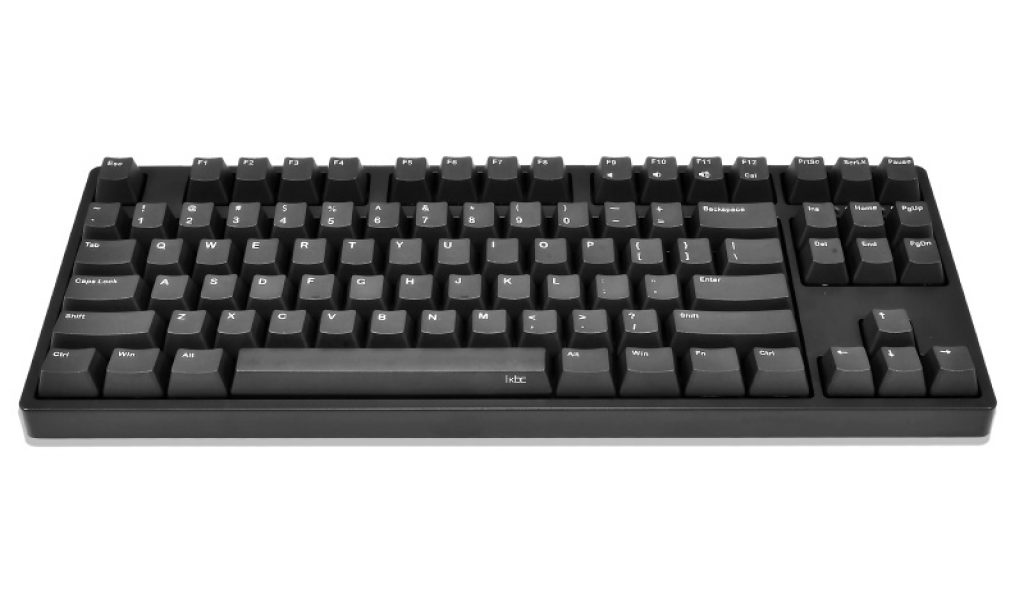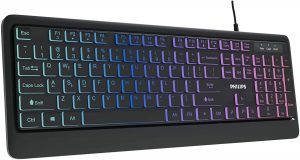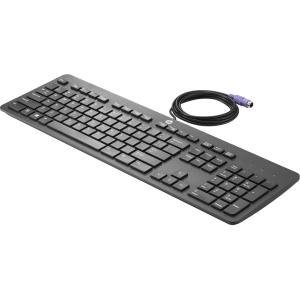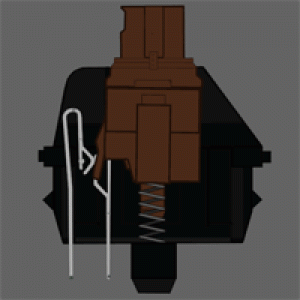When searching for a keyboard for your gaming setup, you may see a bunch of different phrases.
“Mechanical Keyboards!” “Compatible with cherry MX keys!” “This keyboard comes with blue, green, red, and black switches!” Etc.
If you’re new to keyboards, you might be wondering – “what in the world does this all mean?”
Well, I’m here to help! Below I’ve put together a very basic guide to keyboards, key switches, and key caps.
First of all, what is a Mechanical Keyboard?
A mechanical keyboard is usually the standard keyboard for gaming. They’re built to be durable, sturdy, and customizable. As a result, they do tend to be expensive. You can take apart a mechanical keyboard and change whatever you want – the most common changes are the switches and the keycaps. The key downsides of a mechanical keyboard include price, weight, and sound. Gratefully, if noise bothers you, you can just change the mechanical keyboard’s switches (more on this later).
And what is a membrane keyboard?
The other type of keyboard is a membrane keyboard. Membrane keyboards tend to be the most common keyboards. They are lighter, generally more portable, cheaper, and quieter than their mechanical counterparts. It’s called a membrane keyboard because it is made with a rubber membrane. This rubber-like Membrane protects the keyboard from dirt which protects it from deteriorating. The key downsides of membrane keyboards include their tendency towards a “mushy” key feel, a shorter lifespan, as well as an increased difficulty to clean. A membrane keyboard may mistype became the membrane might break (this can make your gaming experience worse, especially if you miss a spell). You also cannot customize your membrane keyboard with keycaps or key switches. They’re also a ton of “mechanical feel” membrane keyboards.
Here are the key difference between each keyboard.
| Mechanical Keyboards | Membrane Keyboards | |
|---|---|---|
 |  | |
| Convenience | Much heavier | Light weight |
| Spills | Waterproof | Not waterproof |
| Cleanliness | Easier to clean | Harder to clean |
| Customization | Can customize | Cannot customize |
| Keyboard Responsiveness | Much more responsive, which makes it better for gaming | Not as responsive – not ideal for games that require fast judgment |
| Key Sounds | Noisy, but can be quieted down with the right key switch (but not as quiet as a membrane keyboard) | Low noise level/silent |
| Durability | Much more durable and lasts longer. Can handle 50-100 million clicks. | Shorter durability. Can handle 5-10 million clicks |
| Cost | Usually much more expensive | Inexpensive |
| RGB Backlight | Yes | Yes |
Which keyboard is best for me?
That depends.
If you are a light/casual gamer and are often traveling/moving around, then you should get a membrane keyboard.
If you are a gamer or a power user and would like a keyboard that provides much more direct feedback, would last you a long time, or would allow you to customize the look and feel of the keyboard, then you should get a mechanical keyboard.
What is a key switch?
So you’ve decided to get a mechanical keyboard. Now on to the next lesson – what is a key switch, and what are the differences between each switch?
Mechanical keyboards work via a discrete switch underneath each key cap, similar to a typewriter. These are called key switches. This makes the keyboard not only less prone to failure, but also more responsive and comfortable.
Types of Key Switches
There are three types of switches: Linear switches, tactile switches and clicky switches.
Linear Switches
Linear switches have the simplest operations – they just move straight up and down. They feel the same from the moment you start pressing the key until the key reaches the bottom. There is no sound or bump feeling when the click actuates, or registers.
These switches are great for those who prefer to not feel a “bump”/any feedback while typing.
Tactile Switches
Tactile switches provide tactile feedback, when hitting the actuation point. As you press the key down, you will notice a small bump, which lets you know that your key press got successfully registered.
These switches are great for those who would like to feel a slight bump when the key is actuated, without much noise.
Clicky Switches
Clicky switches provide an additional click sound, offering better typing feedback. As a result, these switches tend to be a bit more noisy. You don’t have to push the key all the way down – you can release the key immediately after you receive the feedback. These switches can also be useful for ASMR videos.
These are great for those who like the clicky noise when typing!
So what are these “Cherry MX” switches I keep hearing about?
Cherry MX switches are mechanical keyboard switches manufactured by Cherry Corporation, a company based out of Germany. Cherry MX switches are known to be the standard for mechanical keyboards. However, a couple years ago their patent for their switches have expired, which has lead other companies to create clones of their switches (such as Kailh, Greetech, etc).
There are many different Cherry MX switches, all named after their stem color. Each stem color has different characteristics.
- Cherry MX Black Switches
The Cherry MX Black is a linear type of switch. The switch does not provide any feedback when hitting the actuation point and it just generates noise when bottoming out. They have a 60 cN actuation force, making them a bit heavier. Therefore, the likelihood of accidental presses are reduced. These keys are best for RTS and shooter games, since they can prevent accidental key presses that might occur on less stiff switches. Typists usually choose other switch types.
- Cherry MX Red Switches
The Cherry MX Red is also a linear type of switch. But the main difference between these and the red switches is that they have a low actuation force, at 45 cN. Red switches have been marketed as a gaming switch, with the light weighting allowing for more rapid actuation, and have become increasingly common in gaming keyboards.
- Cherry MX Blue Switches
The Cherry MX Blue is the most common tactile, clicky switch. They are popular among typing enthusiasts due to their tactile bump and audible click. However, they may be less suitable for gaming due to their high weighting (50 cN). As a result, it’s a bit harder to double tap. However, there are a couple of gaming keyboards that use blue switches. Also to note, blue switches are noticeably louder than other mechanical switches.
- Cherry MX Brown Switches
The Cherry MX Brown is one of the most popular tactile, non-clicky switch types right now. It is a nice middle of the road option between gaming and typing. For instance, the switch provides tactile feedback, but it does not generate a sound like the Cherry MX Blue. The switch allows fast key presses in games, making them ideal for MOBAs, MMOs, RTS and similar genres.
There are plenty of other types of Cherry MX switches, but they’re not as common as the four above. If you would like to check out more information, then The Gaming Setup has a great article.
- Some companies use their own switches for their own keyboards.
For example, Razer has their own branded Green, Orange, and Yellow switches. Logitech also has their own switches called Romer-G. If you own any keyboards from these brands, be aware that certain key caps may not be compatible with your keyboard.
What are optical switches?
Optical switches, often also called opto-mechanical switches, are a fairly new innovation. They operate similarly to regular keyboards. But what’s different is how the key input is received and transmitted. Contrary to traditional mechanical switches that actuate by establishing a metal-to-metal contact, optical switches are triggered by a signal of light. As a result, less physical contact is required which makes the switches less susceptible to key chattering. But note! If your keyboard comes with OPTICAL key switches, your keyboard will ONLY support optical style key switches.
There are several keyboards that contain optical switches. Both the Razer Huntsman and Razer Huntsman Elite have optical switches.
A Basic 101 About Keycaps
A keycap is simply a small plastic cover placed over the key switch of a keyboard. Keycaps are often illustrated to indicate the key function or alphanumeric character they correspond to. If you would like to decorate your keyboard, you can purchase plenty of custom keycaps from all over the web. But before you make a purchase, make sure to see if the custom keycaps fit the key switches you’re using!
Here are some terms you should know.
- ABS Keycaps
ABS keycaps are the cheapest and most common plastic used for keycaps. These types of keycaps are mass produced because of how easily they are injection molded. ABS keycaps feel smooth and develop a greasy shine over time.
- PBT Keycaps
PBT plastic is less common but is usually higher quality than ABS. These keycaps feel textured and are more durable. PBT are considered superior to ABS since they are more durable and wear down less over time. They also never shine after long usage. However, PBT are usually louder than ABT when typing. You can find PBT keys on a few industry-popular keyboards such as Ducky, Pok3r, HHKB, and Realforce.
- POM Keycaps
POM (Polyoxymethylene) keycaps are a quality grade higher than PBT keycap, but also considerably more expensive and therefore very uncommon. These also don’t shine as fast as ABT keycaps.
- Artisan Keycaps:
a customized, specially-made single keycap. Many artisan keycaps are created with elaborate casts and custom-painted, designed more for aesthetic appeal than functionality.
- Doubleshot Keycaps
Unlike printing, this keycap type is produced when two layers of plastic are molded into each other. The first layer is usually molded for the legend (the graphic on the keycap), followed by the second mold injection for the keycap hull, thus “double-shot”. The end result is a key legend which will never fade or chip off.
- Pudding Keycaps
Pudding key caps are key caps that look like pudding on the sides. They are made out of PBT material. These keycaps are great to really show off your keyboards RGB.

















